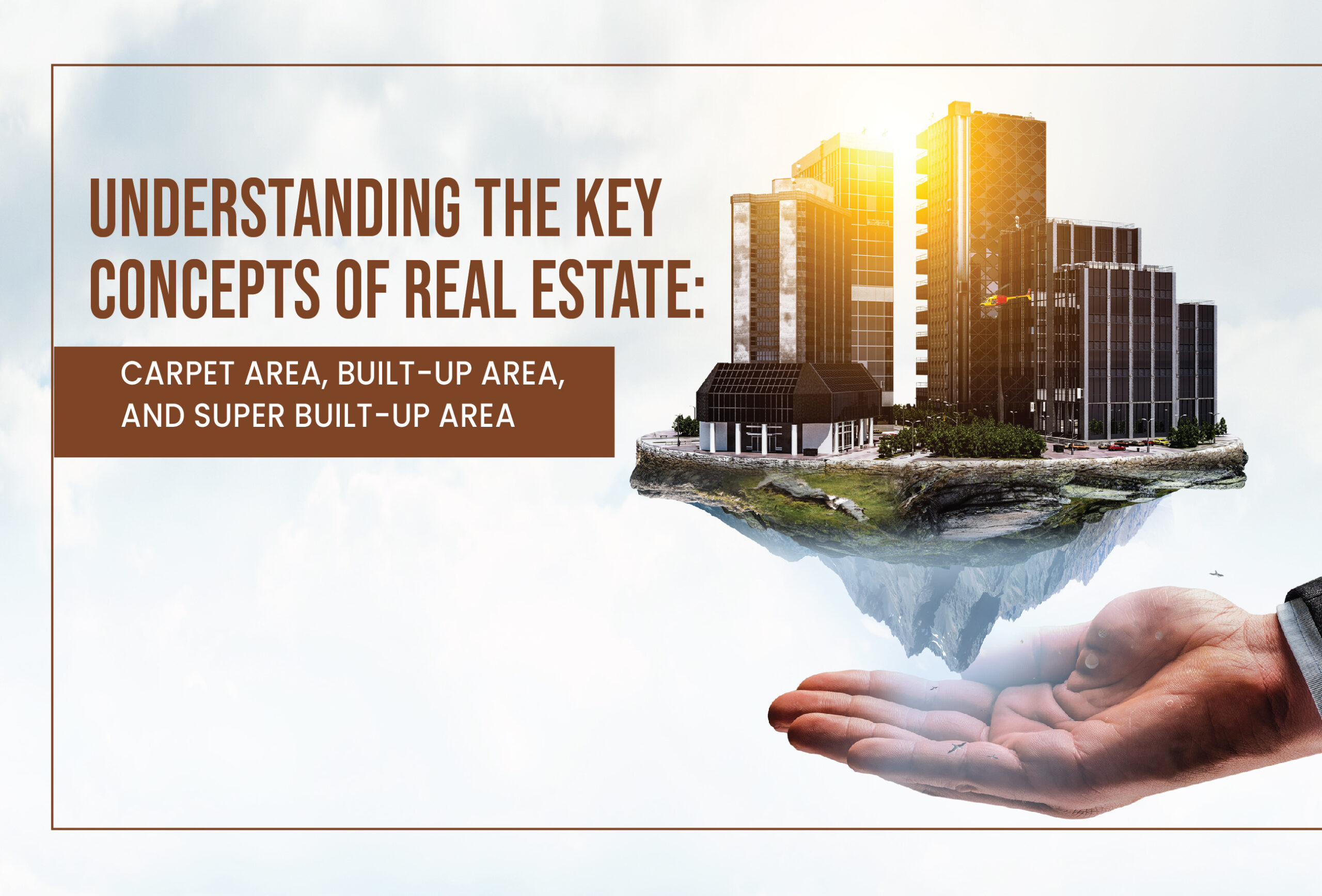Real estate terminologies can often befuddle even the savviest of property seekers. Amidst the array of jargon, three fundamental concepts — Carpet Area, Built-up Area, and Super Built-up Area — stand out as crucial pillars in comprehending a property’s dimensions and valuation. Whether you’re eyeing 2 BHK flats in Karjat ready possession or considering a cosy 1 BHK flat in Karjat, grasping these concepts is paramount. Let’s delve into the intricacies, simplified for ease of understanding.
Why is it important to understand carpet area, built-up area and super built-up area?
- These terms hold immense significance in property evaluation, pricing determination, and legal compliance.
- Knowing them helps buyers make informed decisions, ensuring they get what they pay for and avoiding misunderstandings.
What does carpet area mean in real estate?
- Carpet Area refers to the actual usable space within the walls of an apartment.
- It encompasses the area where one can lay the carpet, excluding the thickness of the inner walls.
- It includes the living room, bedrooms, and sometimes, the balconies.
What does the RERA carpet area include?
- Under the Real Estate Regulatory Authority guidelines, the RERA Carpet Area includes the walls’ periphery along with the usable area.
- This provides a more accurate measure of the space available.
How is the carpet area different from the RERA carpet area?
- The fundamental difference lies in the inclusion of a wall area.
- Carpet Area excludes walls, while RERA Carpet Area encapsulates them, providing a more comprehensive estimate of usable space.
How are the general carpet area and RERA carpet area calculated?
Carpet Area is straightforward to calculate: Measure the inner length and breadth of the apartment and multiply the values.
What does built-up area mean in an apartment?
- Built-up Area encompasses the Carpet Area along with the area occupied by walls, balconies, and other amenities like corridors or elevators shared among residents.
- It includes the actual area you ‘walk through’ within your apartment.
How is the built-up area calculated in a flat?
To calculate the Built-up Area, add the Carpet Area to the thickness of the walls and other common spaces.
What is a super built-up area?
Super Built-up Area encompasses the entire space occupied by the apartment, including the Built-up Area and a proportional allocation of common spaces like staircases, lobby, and amenities. It includes shared areas outside the apartment but within the building.
How is the super built-up area calculated in an apartment?
Super Built-up Area computation involves adding the Built-up Area to a proportionate allocation of common spaces like hallways, elevators, etc., which varies across developments.
The super-built-up area of an apartment typically includes the total area occupied by the apartment and the proportional area of common spaces in the building. It usually comprises:
- Carpet Area: This is the actual usable area within the walls of the apartment, excluding the thickness of the inner walls. It includes the area where you can lay the carpet.
- Built-up Area: This area extends beyond the carpet area and includes the thickness of the walls, balconies, and other areas like the ducts and the staircase within the apartment.
- Common Area: The super built-up area also includes a portion of common areas like corridors, lobby, staircase, elevator space, and other shared amenities like gymnasiums, swimming pools, etc. This allocation is usually calculated proportionally among all the apartments in the building.
The specific calculation method might vary from place to place or based on the builder/developer’s policies. It’s always advisable to check the details provided by the builder or seller to understand precisely how the super built-up area has been calculated for a particular apartment.
What does the loading factor mean in a property?
The loading factor in property typically refers to the ratio of rentable square footage to the total square footage of a property. It helps determine how much space within a building or property can be rented out to tenants.
For instance, if you have a building with total square footage of 10,000 square feet, but due to common areas such as hallways, elevators, stairwells, etc., only 9,000 square feet are rentable to tenants, the loading factor would be the ratio of the rentable square footage (9,000) to the total square footage (10,000), which in this case would be 90%.
It’s an essential consideration for both landlords and tenants as it affects lease calculations, rental costs, and understanding the actual usable space within a property.
Hence, the loading factor refers to the percentage of common spaces allocated to each apartment. A higher loading factor increases the Super Built-up Area, impacting the overall price per square foot.
Difference Between Carpet area, Built-up Area, And Super Built-up Area
- Carpet Area is the actual usable space within apartment walls.
- The Built-up Area includes a Carpet Area additional wall space and shared amenities.
- Super Built-up Area extends to Built-up Area and a proportion of common spaces.
In conclusion, comprehending these concepts is vital for any real estate transaction, ensuring you make an informed decision, especially when exploring 2 BHK flats in Karjat ready possession or scouting for a cosy 1 BHK flat in Karjat. Understanding these areas empowers you to assess property value accurately and make a wise investment choice.




Leave a Reply